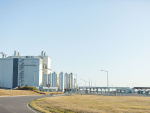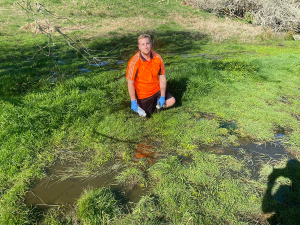Fonterra's $7/kgMS opening milk price is at the top end of the range seen by market followers and analysts.
“Hopefully it’s a conservative forecast,” Federated Farmers national dairy chairman Chris Lewis told Dairy News.
“It is definitely positive news and will be very much welcomed by farmers.
“I guess for a lot of analysts and farmers who follow the USD, Global Dairy Trade and the futures it probably comes as no surprise that it’s a good figure.
“Commodity prices have been doing well for the past few months, the dollar has dropped: it’s down to US$0.69 and was down to 68.50 for a while; four months ago it was up in the mid 70s.”
The milk price is a little higher than he expected but a welcome surprise.
BNZ senior economist Doug Steel thought a range of $6.50 - $7/kgMS was possible based on current pricing and currency levels, so it is at the top end of that.
“It matches the previous highest opening forecasts [in the 2013-14 and 2014-15 seasons] from Fonterra. In those seasons, the first ended up at $8.40/kgMS, the second ended up at $4.40/kgMS. It’s a reminder that this is just a forecast and, like any forecast, has a fair margin of error around it.”
Steel says for the 2017-18 season the milk price forecast lift to $6.75 from $6.55 was also at the top end of expectations, “but credible”.
“Based on our calculations, they are consistent with international dairy prices and the currency remaining around current levels. Eyes are on the GDT auctions and FX market to see if this is how it plays out.
“Higher milk prices put pressure on Fonterra’s earnings (as an input cost to the business) which were already challenged by the payment to Danone and the impairment from the co-op’s Beingmate investment.”
Overall the announcements indicate positive cashflow for the dairy industry ahead, says Steel. It will help NZ’s external accounts and economy.
“For the Reserve Bank NZ it reinforces that international dairy product prices are running a touch above the bank’s medium term views and the currency is running lower than anticipated.”
Fonterra forecasts a 1.5% increase in its milk collections next season, which is consistent with BNZ’s 2% pick for the industry as a whole.
“As always the weather be a key factor in milk production over the season,” says Steel.
Fonterra chairman John Wilson says a continued positive global supply-and-demand picture gives the co-op confidence to increase its current forecast farmgate milk price into the new season.
“Demand is expected to remain strong, especially from China and for butter and AMF. We are expecting the global dairy market’s current prices, especially for fats, to continue throughout the new season.
“We are also forecasting our NZ 2018-19 milk collections to be 1525 million kgMS -- a 1.5% increase on our current forecast for this season -- and we expect to see a lift in supply from the EU, US, Australia and Argentina.
“We will announce our forecast earnings per share for the 2019 financial year in July as normal.”
Fonterra is required under the Dairy Industry Restructuring Act to announce its forecast milk price at the beginning of each season, starting June 1.











